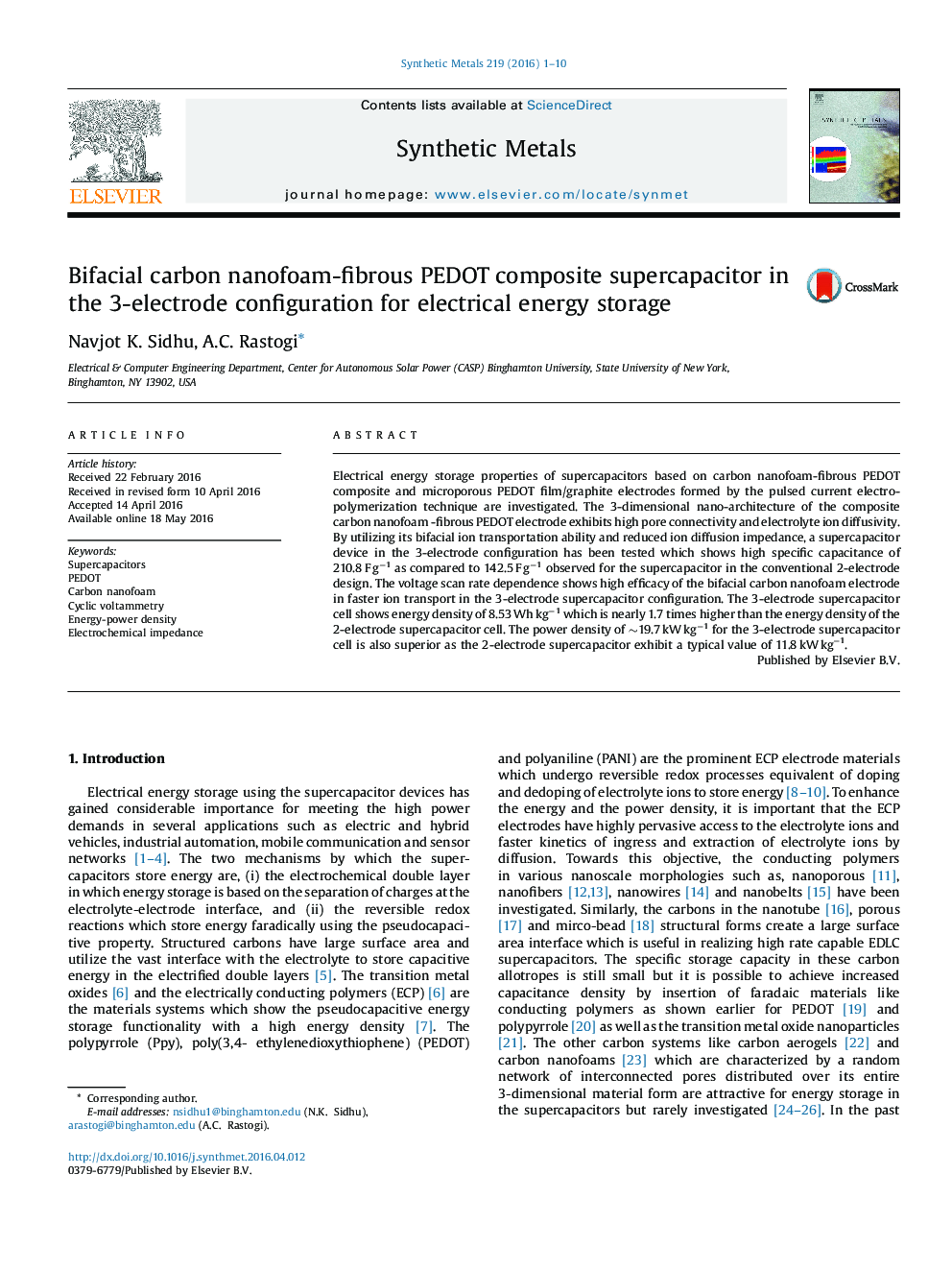| Article ID | Journal | Published Year | Pages | File Type |
|---|---|---|---|---|
| 1440145 | Synthetic Metals | 2016 | 10 Pages |
•Carbon nanofoam-nanofibrous PEDOT supercapacitor in 3-electrode structure is shown.•Carbon nanofoam-nanofibrous PEDOT shows bifacial ion diffusion across nanopores.•3-electrode supercapacitor shows high specific capacitance of 210.8 F g−1.•High energy density of 8.53 Wh kg−1 achieved in the 3-electrode supercapacitor cell.•Higher power density of 19.7 kW kg−1 is realized in 3-electrode supercapacitor cell.
Electrical energy storage properties of supercapacitors based on carbon nanofoam-fibrous PEDOT composite and microporous PEDOT film/graphite electrodes formed by the pulsed current electropolymerization technique are investigated. The 3-dimensional nano-architecture of the composite carbon nanofoam -fibrous PEDOT electrode exhibits high pore connectivity and electrolyte ion diffusivity. By utilizing its bifacial ion transportation ability and reduced ion diffusion impedance, a supercapacitor device in the 3-electrode configuration has been tested which shows high specific capacitance of 210.8 F g−1 as compared to 142.5 F g−1 observed for the supercapacitor in the conventional 2-electrode design. The voltage scan rate dependence shows high efficacy of the bifacial carbon nanofoam electrode in faster ion transport in the 3-electrode supercapacitor configuration. The 3-electrode supercapacitor cell shows energy density of 8.53 Wh kg−1 which is nearly 1.7 times higher than the energy density of the 2-electrode supercapacitor cell. The power density of ∼19.7 kW kg−1 for the 3-electrode supercapacitor cell is also superior as the 2-electrode supercapacitor exhibit a typical value of 11.8 kW kg−1.
